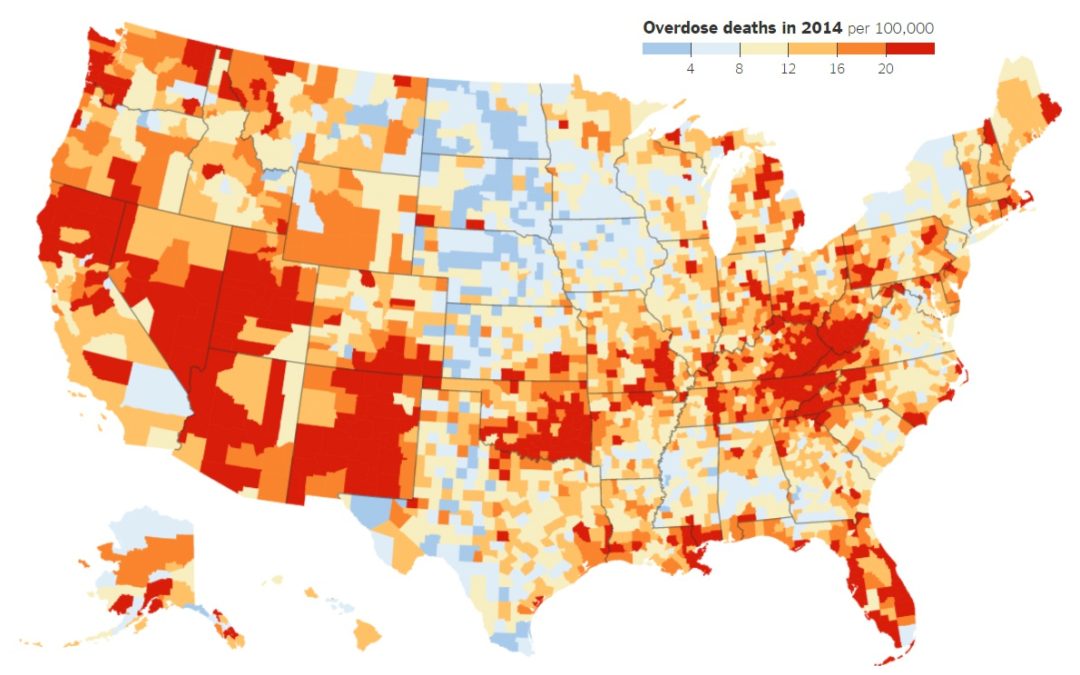The United States has contracted the worst case of the opiate addiction in the world. We have experienced more than a three-hundred percent increase in prescription opiate pain reliever drugs by pharmaceutical companies since 2001 to 2005. Currently enough opiate pain medication prescriptions are written that almost every single American could have their own bottle. There can be no doubt about it, the opiate addiction problem has been pretty serious recently, covering news media channels across America. Unfortunately, the opioid addiction epidemic will become unstoppable if treatment for it is not effected rapidly. The number of drug overdose related deaths reached a new peak in 2014 killing 47,055 people, or the equivalent of about 125 Americans every day. The death rate from drug overdoses is climbing at a much faster pace than other causes of death. It kills more Americans every year than traffic accidents do, and deaths from opioid overdoses have tripled since 2000. The opioid addiction epidemic is now similar to that of the human immunodeficiency virus, or H.I.V., epidemic in the late 1980s and early 1990s, said Robert Anderson, the C.D.C.’s chief of mortality statistics. Many of these deaths could be prevented if patients had better access to substance abuse therapy, experts say. Yet people battling addiction say that treatment often is unavailable or unaffordable.
Only 11% of the 22.7 million Americans who needed drug or alcohol treatment in 2013 actually got it, according to the Substance Abuse and Mental Health Services Administration. While some of those who went without care did so by choice, at least 316,000 tried and failed to get treatment. Substance abuse costs the nation more than $600 billion annually, according to the National Institute on Drug Abuse. Currently, only two cents of every dollar spent to fight drug abuse goes to treatment. The rest is paying for hospital care, courts and even jails, according to a report from Columbia University Addiction Center. President Barack Obama proposed for $1.1 billion in new federal money to combat the growing abuse of heroin and prescription painkillers in the U.S. The president’s 2017 budget proposal will include $1 billion in mandatory funding over two years to increase addiction treatment for heroin and prescription opioids and to make the services more affordable. Most of the proposed new money – $920 million – would fund cooperative agreements with states to provide more drug-based treatment for people addicted to painkilling opioids such as OxyContin, Percocet, hydrocodone and morphine.
States Battling Opioid Epidemic.An article written by the New York Times outlines a few places struggling with the heroin and opioid addiction epidemic.
New Hampshire
Opioid related drug overdose deaths have skyrocketed in New Hampshire. In 2014, 326 people died from an overdose related to opioids. This class of drugs include heroin and fentanyl, a painkiller 100 times as powerful as morphine. Around the nation, opioids were involved in more than 61 percent of deaths from overdoses. Recently New Hampshire has seen an increase of heroin laced with fentanyl. It can be deadlier than heroin. Long time users cannot tell the different, and after injected the drug the outcome can be fatal. Death rates in New Hampshire were symptomatic of a larger problem: The state is second to last, ahead of only Texas, in access to treatment programs. New Hampshire spends $8 per capita on treatment for substance abuse. Connecticut, for example, spends twice that amount.
Appalachia
The prescription drug addiction among the workers has sparked an epidemic for more than a decade that has led to a high overdose death rate. A few years ago, as laws were passed to address the misuse of prescription painkillers, addicts began turning to heroin instead. Because of a lack of workers needed to treat addicts, overdose deaths have continued to afflict states like West Virginia, which has the highest overdose death rate in the nation. Some even say that chances of getting into treatment in West Virginia is ridiculously small.
New Mexico
New Mexico has had the highest death rates from heroin overdoses since the early 90s. Effecting small cities and towns in New Mexico, heroin addiction has been passed down from generation to generation. Jennifer Weiss-Burke, executive director of a nonprofit group formed to curb heroin addiction says “ I’ve heard stories of grandparents who have been heroin users for years, and its passed down to younger generations, almost like it’s a way of life. “Weiss who lost her son from a heroin overdose is 2011, said it was much harder to treat young people. “Some young people are still having fun and they don’t have the desire to get sober, so they end up cycling through treatment or end up in jail.”
Out of State Treatment
Some patients have found it productive to seek an out of state addiction treatment center program. Escaping the already bad situation, out of state programs allow the patient to start over. Sometimes the best possible thing that a long-term drug abuser can do is remove him/her -self from the situation as much as they possibly can. “ Removing myself from the environment I grew up in, and allowing myself time to heal and work on my addiction was the best decision I’ve ever made “ said Shane Cunningham. Now almost 4 years sober, Shane relocated from Arizona to Texas for heroin addiction treatment. “There was no easy way for me to leave, I didn’t know anyone in Texas, so those tuff days where I wanted to quit, I stayed and eventually completed the program.” It is much easier to leave treatment while enrolled at a local facility. A friend could provide quick transportation and before you know it, the person returns to the exact same toxic environment as before.
If you are a loved one is seeking help for a drug or alcohol addiction, please give us a call.


Recent Comments